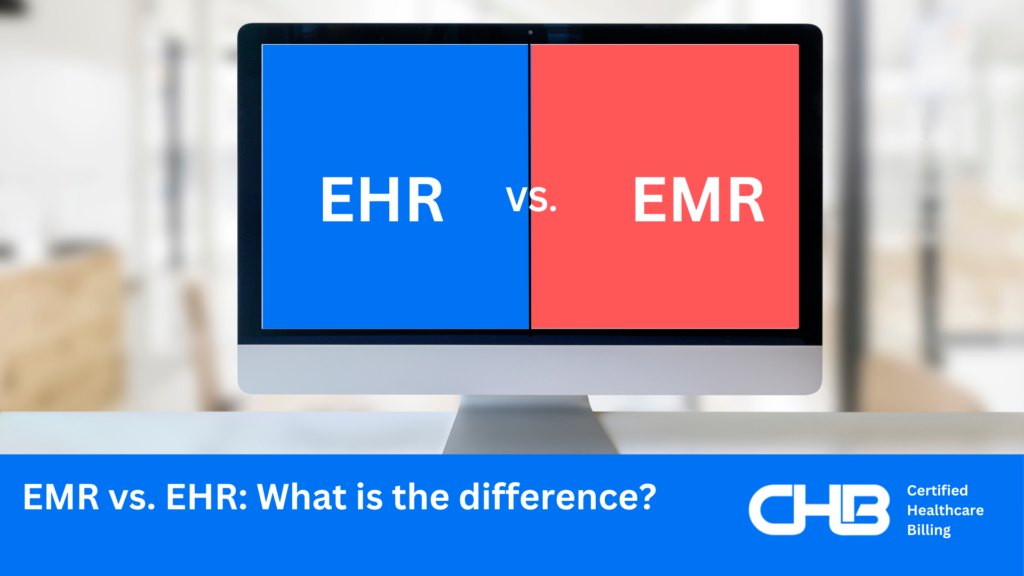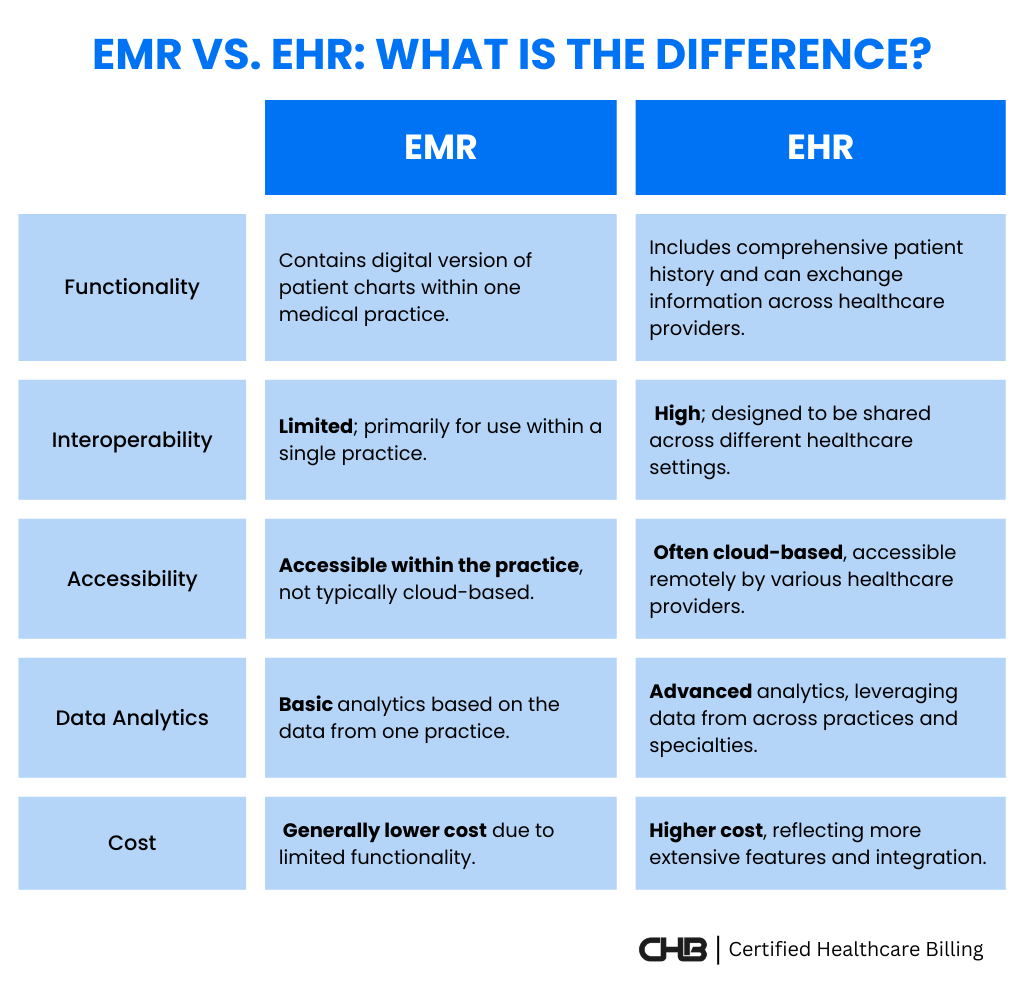EMR vs EHR: What is the difference?

EMR vs EHR
Electronic Health Records (EHR) and Electronic Medical Records (EMR) are often used interchangeably.
While they sound similar, they have distinct purposes.
EMRs are digital versions of paper charts used within a single practice, focusing on the medical and treatment history of patients.
In contrast, EHRs provide a comprehensive view of patient care by integrating data from multiple healthcare providers and facilities
What is an EMR?
Electronic Medical Records (EMR) are digital versions of paper charts in a clinician’s office.
They include medical and treatment histories for patients within one practice. Here’s what EMRs offer:
- Track Data Over Time: EMRs help track patient data over time, allowing providers to monitor health trends.
- Identify Patient Needs: They identify patients due for checkups or preventive screenings.
- Monitor Health Metrics: EMRs can monitor metrics like blood pressure or vaccination status.
- Improve Efficiency: They streamline processes by reducing paperwork and storing information digitally.
However, EMRs have limitations. They usually stay within one practice and are not designed for sharing information with other healthcare providers.
What is an EHR?
Electronic Health Records (EHR) are more comprehensive than EMRs. They contain all the information found in EMRs but are designed to be shared across different healthcare settings. EHRs offer several advantages:
- EHRs provide a comprehensive view of a patient’s health journey, compiling data from various providers.
- They are built to share information with other healthcare providers, enabling coordinated patient care.
- EHRs often allow patients to access their records and engage actively in their care.
- With data from multiple sources, EHRs support better decision-making and care planning.
Key Differences Between EHR and EMR
- Scope: EMRs are specific to a single practice, while EHRs cover a broader range of data across multiple settings.
- Interoperability: EHRs facilitate data sharing among providers, unlike EMRs, which remain within one practice.
- Patient Access: EHRs typically allow patients to view their health records, while EMRs do not.
Benefits of EHR Over EMR
- Enhanced Data Sharing: EHRs enable seamless patient information sharing, improving continuity of care.
- Patient-Centric: They empower patients by providing access to their health information, encouraging proactive health management.
- Holistic Approach: EHRs give a complete picture of patient health, aiding informed decision-making by healthcare providers.
Tips
Prioritize Seamless Data Exchange: When selecting a system, consider how well it integrates with other healthcare providers and systems. EHRs are designed for this interoperability, which is crucial for coordinated patient care and avoiding redundant tests.
Leverage Patient Portals: Utilize the patient portal features common in EHRs to empower patients with access to their health information, appointment scheduling, and secure communication. This can improve patient engagement and satisfaction.
Ensure Robust Billing Integration: For efficient practice management, choose an EHR system that seamlessly integrates with your medical billing processes. This reduces administrative burden, minimizes errors, and helps optimize revenue cycles, as highlighted by Certified Healthcare Billing’s services.
Invest in Staff Training: Proper training for your medical and administrative staff on the chosen EMR/EHR system is paramount. Well-trained users can maximize the system’s features, improve data accuracy, and enhance overall workflow efficiency.
Focus on Data Accuracy and Completeness: Emphasize the importance of meticulous data entry. Accurate and complete patient records are vital not only for clinical decision-making but also for proper coding and billing, and for legal and compliance purposes.
Regularly Review Security Protocols: With sensitive patient data, it’s critical to regularly review and update your system’s security measures to ensure HIPAA compliance and protect patient privacy.
Conclusion
While both EMRs and EHRs are integral to healthcare, EHRs provide a more comprehensive, integrated, and patient-centered approach. Choosing between them depends on your practice’s needs and the level of care coordination required.
Understanding the distinctions between EHRs and EMRs helps providers make informed decisions, improving patient outcomes and enhancing healthcare delivery.
If you’re considering updating your systems, assessing the advantages of EHRs can guide your choice.
We work with most EHR systems to ensure seamless integration and efficient billing processes. Our team can integrate your EHR, ensuring that we handle your billing accurately and effectively through your chosen system. For more information, please contact us to learn how we can support your practice’s needs.
Know more: Medical billing software cost
FAQs
What is the main difference between EMR and EHR?
EMRs are limited to a single practice’s records, while EHRs are designed to share patient data across multiple healthcare settings.
Why are EHRs more beneficial for patient care?
EHRs allow for better data sharing and care coordination, providing a holistic view of a patient’s health history and improving treatment outcomes.
Can patients access their health information through EMRs?
Typically, EMRs do not provide patient access, whereas EHRs often offer patients the ability to view and manage their health information.
How do EHRs support healthcare providers?
EHRs enhance decision-making and streamline communication among healthcare providers, leading to more coordinated and efficient patient care.
Is switching from EMR to EHR complicated?
Transitioning to an EHR system involves planning and training but ultimately leads to improved care coordination and patient engagement.



